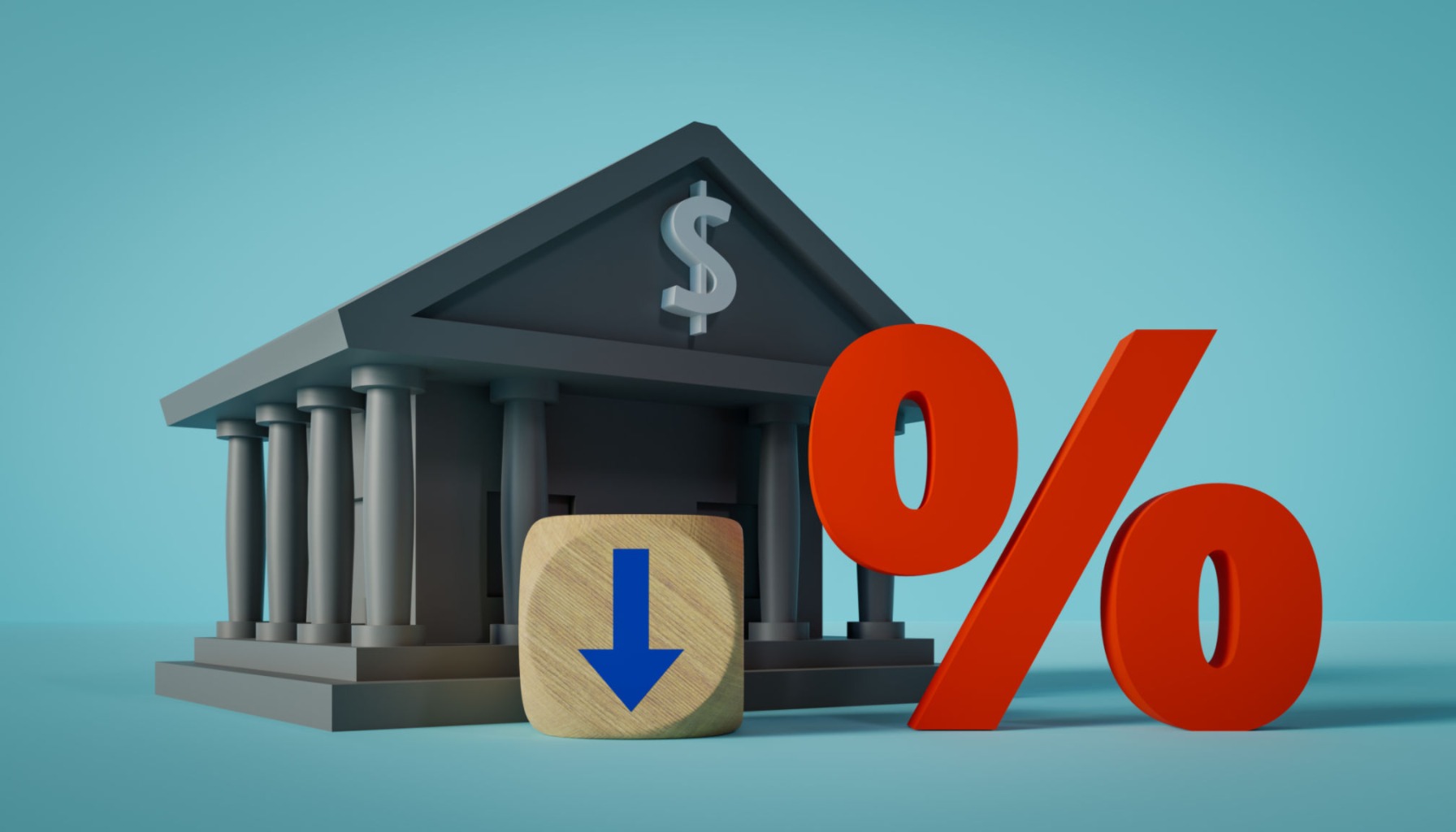Ever wondered why, when you're finally ready to buy that dream home, the mortgage interest rate seems to jump up? It's not magic, and it's certainly not arbitrary. The answer often lies with something you might not think about daily: Treasury yields. Simply put, Treasury yields, particularly the 10-year Treasury yield, act as a primary benchmark that directly influences the mortgage interest rates you'll see offered by lenders. When these yields climb, mortgage rates generally follow suit, and when they dip, mortgage rates tend to come down as well.
How Do Treasury Yields Impact Mortgage Interest Rates?
This connection might seem a bit abstract, but it's deeply practical for anyone looking to finance a home. Think of the government bond market as a giant, national thermostat for borrowing costs. The Treasury yield is one of the main dials on that thermostat. As a mortgage lender, I see this connection every day. When I’m quoting rates or advising clients, I’m constantly watching what’s happening with the 10-year Treasury yield because it’s a significant factor in how much it costs for banks and financial institutions to lend money.
Treasury Yields: The Foundation of Your Mortgage Rate
To truly understand how Treasury yields impact mortgage interest rates, we need to peek behind the curtain of how lenders operate. When you apply for a mortgage, the lender isn't just pulling a number out of thin air. They need to make money, and they do this by packaging and selling those mortgages to investors in something called the secondary market as mortgage-backed securities (MBS).
This is where Treasury yields come into play. U.S. Treasury bonds, especially the 10-year Treasury note, are often considered a risk-free investment. This means investors believe the U.S. government is highly unlikely to default on its debt. Lenders look at the yield these “risk-free” bonds are offering. Why? Because if investors can get a certain return from the government with very little risk, they’ll demand a higher return from you on your mortgage to compensate for the added risk of lending.
Here’s a breakdown of the process:
- Treasury Yields as a Benchmark: Lenders use the yield on the 10-year Treasury as a baseline interest rate. This is their starting point – the “risk-free” or base rate.
- Adding a Premium (the Spread): To this baseline yield, lenders add a margin, often called a “spread.” This spread covers various costs and risks associated with originating and holding a mortgage. It includes things like:
- The credit risk of the borrower (how likely you are to repay).
- The lender’s operating costs.
- The profit margin for the lender.
- The yield required by investors to buy mortgage-backed securities.
- Calculating Your Mortgage Rate: So, your mortgage rate is essentially the 10-year Treasury yield + the lender's spread.
This is why when the 10-year Treasury yield goes up, your mortgage rate typically goes up, and vice versa. It’s a direct transmission of cost.
What Makes Treasury Yields Move? It’s Not Just the Fed.
You might think that Federal Reserve interest rate hikes are the sole driver of mortgage rates. While the Fed's actions absolutely influence short-term rates and can indirectly affect longer-term yields, Treasury yields don't move in lockstep with the Fed's federal funds rate. Instead, they are much more sensitive to broader market expectations about the economy and inflation.
Several factors can cause Treasury yields to fluctuate:
- Inflation Expectations: If investors expect inflation to rise, they will demand higher yields on bonds to compensate for the decreasing purchasing power of their money over time. Higher inflation expectations usually lead to higher Treasury yields.
- Economic Growth Prospects: Stronger economic growth can signal a healthier economy, but it can also lead to concerns about future inflation. If the economy is booming, investors might expect the Fed to raise rates to cool it down, which can push yields higher.
- Government Debt and Supply: When the government issues a lot of new debt (bonds), there's a larger supply of bonds in the market. If demand doesn't keep pace, bond prices can fall, and yields (which move in opposite directions to prices) can rise.
- Investor Confidence and Global Conditions: Geopolitical events, global economic stability, and overall investor sentiment can all impact demand for U.S. Treasuries. In times of uncertainty, investors often flock to U.S. Treasuries as a safe haven, which can lower yields. Conversely, if other countries offer more attractive investment opportunities with higher potential returns, demand for U.S. Treasuries might decrease, pushing yields up.
- Monetary Policy Outlook: While not directly tied to the Fed's current rate setting, Treasury yields are heavily influenced by what the market expects the Fed to do in the future. If investors anticipate future rate hikes or a longer period of higher rates, yields will likely rise.
It’s a complex interplay of these forces that causes the “silent force” behind your mortgage rate to move.
Yields in Action: A Look at the Numbers
To give you a concrete idea, let’s look at some recent data. As of September 22, 2025, the yield on the U.S. 10-year Treasury note was hovering around 4.13%. For context, a year prior, that yield was closer to 3.75%.
- This 0.38 percentage point increase in the 10-year Treasury yield over the past year is significant. It means the baseline cost for borrowing money has gone up.
- Lately, we’ve seen yields fluctuate due to a mix of factors. Recent inflation data, comments from Federal Reserve officials about future policy, and ongoing global economic uncertainties have all played a role in this volatility.
The table below helps illustrate this:
| Date | 10-Year Treasury Yield | Mortgage Rate Trend |
|---|---|---|
| Sept 22, 2025 | 4.13% | Mortgage rates remain elevated |
| A year ago | 3.75% | Rates were lower |
This data directly reflects what I've seen on my end. When the 10-year yield is at 3.75%, the base cost for lending was lower, allowing lenders to offer more competitive mortgage rates. When that yield climbs to 4.13% (or higher), that extra cost gets passed on to borrowers, making mortgages more expensive. We saw mortgage rates remain elevated during this period because that baseline cost was higher.
Related Topics:
Mortgage Rates Predictions for the Next 12 Months: Sept 2025 to Sept 2026
Mortgage Rates Predictions Next 90 Days: August to October 2025
Why the 10-Year Treasury is Key
You might wonder why the 10-year Treasury note is so much more important for mortgages than, say, the 2-year or 30-year Treasury. This is for a good reason.
- Loan Duration Alignment: The average life of a mortgage, when considering prepayments (when homeowners refinance or sell their homes), tends to be around 7-10 years. This makes the 10-year Treasury yield a natural fit as a benchmark. It aligns with the typical maturity and cash flow patterns of mortgage investments.
- Market Liquidity: The 10-year Treasury note is one of the most actively traded and liquid bonds in the world. This deep market ensures that its yield is a reliable reflection of broad market expectations.
Personal Insights: Navigating the Yield Curve
From my experience in the mortgage industry, I can tell you that the relationship between Treasury yields and mortgage rates isn't always perfectly clean or immediate. Sometimes mortgage rates might move a bit more or less than the Treasury yield due to specific conditions in the mortgage market itself. For example, if there's a sudden surge in demand for mortgage-backed securities, lenders might be willing to accept a slightly lower spread, helping to keep mortgage rates from rising as much as the Treasury yields might suggest. Conversely, if the MBS market experiences turmoil, the spread can widen, pushing mortgage rates higher even if Treasury yields are stable.
It's a dynamic dance. What I tell my clients is to keep a general eye on the 10-year Treasury yield. It’s your best indicator of where mortgage rates are likely headed. However, always get your personalized rate quote, because specific lender policies, your credit profile, and the current MBS market all play a part in the final number you’ll see.
The Treasury market is a complex ecosystem, and understanding its connection to mortgage rates is crucial for making informed financial decisions when buying a home.
Capitalize Amid Rising Mortgage Rates
With mortgage rates expected to remain high, it’s more important than ever to focus on strategic real estate investments that offer stability and passive income.
Norada delivers turnkey rental properties in resilient markets—helping you build steady cash flow and protect your wealth from borrowing cost volatility.
HOT NEW LISTINGS JUST ADDED!
Speak with a seasoned Norada investment counselor today (No Obligation):
(800) 611‑3060
Also Read:
- Will Mortgage Rates Go Down in 2025: Morgan Stanley's Forecast
- Mortgage Rate Predictions 2025 from 4 Leading Housing Experts
- Mortgage Rate Predictions for the Next 3 Years: 2026, 2027, 2028
- 30-Year Fixed Mortgage Rate Forecast for the Next 5 Years
- 15-Year Fixed Mortgage Rate Predictions for Next 5 Years: 2025-2029
- Will Mortgage Rates Ever Be 3% Again in the Future?
- Mortgage Rates Predictions for Next 2 Years
- Mortgage Rate Predictions for Next 5 Years
- Mortgage Rate Predictions: Why 2% and 3% Rates are Out of Reach
- How Lower Mortgage Rates Can Save You Thousands?
- How to Get a Low Mortgage Interest Rate?
- Will Mortgage Rates Ever Be 4% Again?



